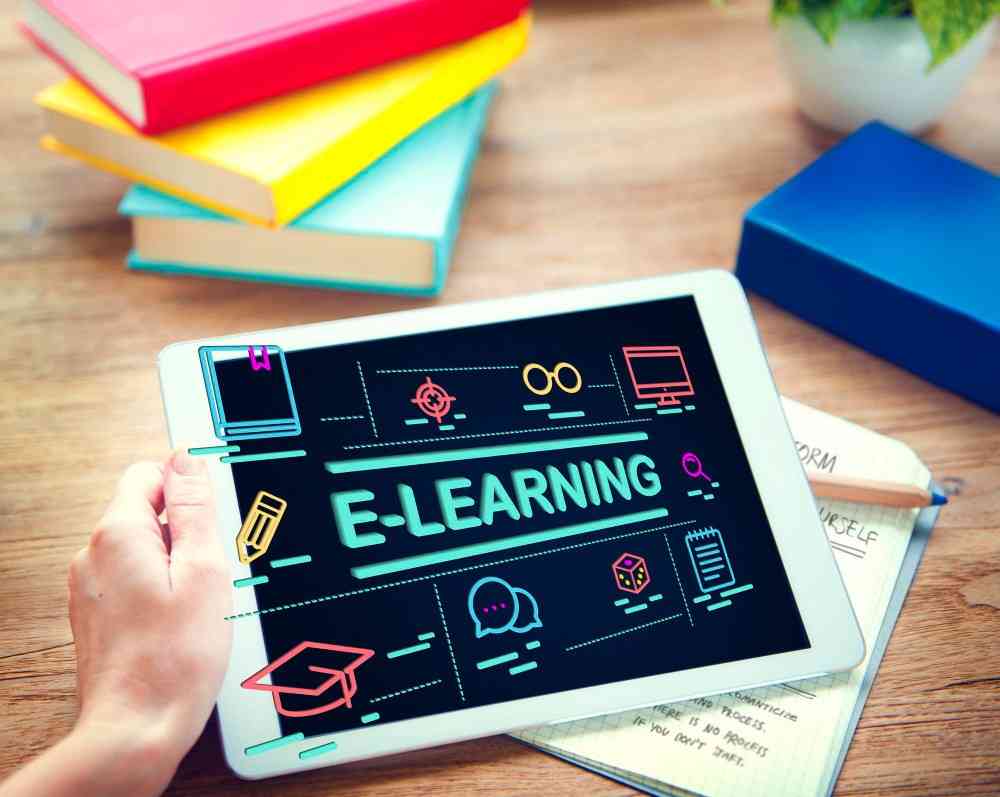Introduction: A New Era of Learning Has Arrived
Think about this for a second — when was the last time you opened a physical textbook to study? Chances are, your go-to learning resource was a YouTube lecture, an online quiz, or maybe a course on a learning app. That’s the power of digital learning platforms in India — they’ve completely transformed how students study, interact, and prepare for the future.
Over the past few years, India has witnessed a massive shift from traditional classrooms to virtual and hybrid learning environments. The COVID-19 pandemic accelerated the change, but what we’re seeing now is more than just a temporary adaptation — it’s the beginning of a permanent transformation in education.
So, what makes digital learning so impactful? Why are students across cities, towns, and even remote villages turning to online platforms? And what does the future of education look like in a country as diverse as India? Let’s unpack these questions together.
The Rise of Digital Learning Platforms in India
The journey of digital learning in India has been nothing short of revolutionary. Ten years ago, the concept of online classes was limited mostly to coaching centers or IT training courses. Today, it’s an essential part of mainstream education.
Platforms like BYJU’S, Unacademy, Vedantu, and Coursera have made learning accessible to anyone with an internet connection. Whether you’re preparing for board exams, engineering entrances, government jobs, or even learning coding and design — there’s a platform for everything.
According to industry reports, India’s online education market is projected to reach $10 billion by 2026, with millions of active users. What’s even more impressive is how these platforms are breaking geographical barriers. Students in small towns who once struggled to find good tutors now have access to top educators and world-class study material — right from their smartphones.

Why Students Are Embracing Digital Learning
Let’s be honest — learning from your phone or laptop feels more natural now than ever before. But convenience isn’t the only reason students are switching to digital platforms. There are several powerful advantages driving this trend:
1. Personalized Learning
In a traditional classroom, every student gets the same lesson at the same speed. But with digital learning platforms in India, students can learn at their own pace. Missed a concept? Replay the video. Want to learn faster? Increase the speed. This flexibility helps students truly understand the material instead of memorizing it under pressure.
2. Accessibility and Inclusivity
One of the best things about digital platforms is accessibility. Students from remote villages or economically weaker backgrounds can now study from the same experts who teach in big cities. With scholarships, free content, and affordable subscription models, quality education is no longer limited to the privileged few.
3. Engaging and Interactive Content
Let’s admit it — watching animated videos or participating in interactive quizzes is far more exciting than reading plain text. Many platforms use gamification, live sessions, and doubt-clearing forums to make learning feel fun and interactive rather than a chore.
4. Skill Development Beyond Academics
Education today isn’t just about passing exams — it’s about preparing for life and work. Digital platforms now offer courses in communication skills, data analysis, entrepreneurship, and even emotional intelligence. These help students develop skills that will actually matter in the future job market.
5. Learning on the Go
Thanks to mobile learning apps, students no longer need to be in one place to study. Whether you’re commuting, traveling, or waiting for your next class, you can make productive use of your time — a major advantage in today’s fast-paced world.
How Digital Learning Is Shaping the Future of Education in India
It’s clear that digital platforms have changed how students learn today, but they’re also influencing how education itself is structured. The future classroom will likely be hybrid — blending the best of both traditional and digital methods. Here’s how this evolution is shaping up:
1. Blended Learning Models Are Becoming the Norm
Schools and universities are now integrating online tools into their curriculum. Instead of depending solely on lectures, teachers use video tutorials, quizzes, and digital notes to make learning more engaging. This hybrid system combines the human touch of teachers with the flexibility of online education.
2. AI-Powered Learning Experiences
Artificial Intelligence (AI) is quietly revolutionizing education. Platforms now use AI to recommend personalized study plans based on a student’s progress and weaknesses. For example, if you struggle with a math concept, the system can suggest extra practice questions or tutorials tailored to your needs.
3. Language Diversity and Regional Content
India’s linguistic diversity used to be a challenge in education. But digital platforms are breaking that barrier by offering content in regional languages. This inclusivity ensures that students can learn comfortably in their mother tongue while accessing the same quality education as others.
4. Affordable and Scalable Education
Traditional classroom education can be expensive due to infrastructure, books, and travel. In contrast, digital learning platforms minimize these costs, allowing more students to learn affordably. As more schools and institutions collaborate with edtech companies, the reach of education will continue to expand.
5. Data-Driven Teaching and Evaluation
Digital tools also provide teachers with valuable insights into student performance. Through analytics, educators can identify which topics students find difficult and adjust their teaching methods accordingly. This data-driven approach helps improve learning outcomes significantly.
Challenges That Still Need Attention
While the rise of digital learning platforms in India is exciting, it’s important to recognize the roadblocks ahead.
1. The Digital Divide
Not every student has access to high-speed internet or a personal device. Many rural areas still struggle with basic digital infrastructure. Without addressing this gap, equal education opportunities will remain a challenge.
2. Screen Fatigue and Attention Span
Spending long hours in front of screens can be mentally and physically draining. Unlike physical classrooms, online environments require more self-discipline and focus — something students often find tough to maintain.
3. Quality and Credibility of Content
With so many platforms available, not all provide high-quality or accurate information. Students need to be selective and rely on platforms that have verified educators and credible content.
4. Limited Social Interaction
Learning is also a social experience — discussing ideas, collaborating on projects, and sharing opinions. While online discussions exist, they can’t fully replace the face-to-face bonding that happens in schools and colleges.
Despite these challenges, the future still looks bright. With the right policies and technological support, these issues can be gradually overcome.

The Role of Government and Institutions
The Indian government has recognized the importance of digital education and has been introducing initiatives to strengthen it. Programs like SWAYAM, DIKSHA, and National Digital Library aim to provide free and open access to quality learning material for students and teachers.
Similarly, the National Education Policy (NEP) 2020 promotes the integration of technology in education. It emphasizes digital literacy, online teacher training, and the creation of virtual labs — all of which are vital steps toward a tech-driven education system.
Private institutions are also collaborating with edtech platforms to enhance their digital infrastructure. Colleges now offer online courses, webinars, and even virtual internships, giving students a blend of academic and practical exposure.
How Students Can Make the Most of Digital Learning
If you’re a student wondering how to make your online learning experience more effective, here are a few practical tips:
- Set a Study Routine: Treat your online classes like regular ones. Fix a schedule and stick to it.
- Take Notes Digitally: Use apps like Notion, Evernote, or OneNote to organize your study material.
- Participate Actively: Ask questions in forums or live sessions to make learning interactive.
- Avoid Distractions: Keep your phone notifications off during classes and take short breaks to recharge.
- Use Multiple Resources: Don’t rely on just one app or teacher. Explore multiple sources to understand different perspectives.
- Focus on Skill-Based Learning: Apart from academics, learn skills like communication, coding, or design — they’ll boost your career prospects.
By combining discipline with curiosity, you can make digital learning one of the most powerful tools in your education journey.

What Lies Ahead for Digital Learning Platforms in India
The next decade of education in India is going to be technology-driven. We’re moving toward a system where learning is continuous, personalized, and borderless. Virtual classrooms, AI tutors, and augmented reality lessons may sound futuristic now, but they’re already becoming part of mainstream learning.
As 5G networks expand and affordable devices become more common, access to education will reach even the most remote corners of India. Moreover, with increased focus on digital literacy, students will not only learn from technology — they’ll learn through it.
For students, this is an incredible opportunity. The learning resources available today were unimaginable just a decade ago. Whether you want to master a new subject, pick up a creative skill, or prepare for a competitive exam — everything is literally at your fingertips.
Conclusion: Learning Without Limits
The future of education in India isn’t coming — it’s already here. Digital learning platforms in India are reshaping how students learn, grow, and dream. They’re breaking barriers of geography, affordability, and accessibility, ensuring that knowledge is not a privilege but a right for everyone.
FAQs
1. What are the best digital learning platforms in India for students?
Some of the most popular and trusted digital learning platforms in India include BYJU’S, Unacademy, Vedantu, Toppr, and Coursera. These platforms offer a wide range of courses — from school subjects to competitive exam preparation and skill-based learning.
2. How are digital learning platforms improving education in India?
Digital learning platforms are making education more accessible, personalized, and engaging. Students can learn at their own pace, get access to top educators, and use interactive tools like quizzes and live classes — all from the comfort of their homes.
3. Are online learning platforms better than traditional classrooms?
Each has its strengths. Traditional classrooms provide face-to-face interaction, while digital platforms offer flexibility and access to a wider variety of resources. The best approach is a hybrid model that combines both methods for an all-round learning experience.
4. Is digital learning effective for exam preparation?
Yes! Many students now rely on online platforms for board exams, JEE, NEET, UPSC, and other competitive tests. With mock tests, video lessons, and real-time doubt-solving, digital learning helps in structured and targeted exam preparation.
5. What is the future of digital education in India?
The future of digital education in India looks bright. With government initiatives, 5G expansion, and growing awareness about online learning, digital platforms will continue to evolve — offering smarter, more inclusive, and personalized education for all students.
Disclaimer: The information provided in this blog is for general informational and educational purposes only. Mantech Publications is not affiliated, associated, authorized, endorsed by, or in any way officially connected with any brands, companies, organizations, or institutions mentioned in the content. The views and opinions expressed in the blog posts are solely those of the individual authors and do not necessarily reflect the official policy, position, or opinions of Mantech Publications. While efforts are made to ensure the accuracy and reliability of the information provided, Mantech Publications and its management accept no responsibility or liability for any loss, damage, or inconvenience caused as a result of reliance on the material published on this website









Leave a Reply